“We currently have a very real opportunity to change our path and improve how we live, while helping our planet. With most things in life, economics, convenience or desire drive change. I believe community solar is an opportunity that will allow all of these to drive renewable energy into the mainstream marketplace.” – Joshua Barrett, Founder of SolarShift
Community Solar is Coming to A Pasture or Rooftop Near You
Harvesting the bounty of Illinois sun, water and soil is a long tradition in Illinois. Now, landowners and facility owners in the Land of Lincoln have a new cash crop to consider: solar farming. As the Future Energy Jobs Act (FEJA) took force June 1, 2017, there are $200 million in cash incentives per year are fueling the expansion of solar PV (and wind power) in Illinois; and a big part of that is oging to be shared power plants known as ‘community solar gardens.’

Outside the town of Frankfort Illinois in rural Will County, an engineer named Joshua Barrett is developing a 6 megawatt, 32-acre project known as honeybee Solar Farm. The name refers to the pollinator friendly ground cover he plans to plant between the rows of solar panels that will be a community solar garden that sells electricity to hundreds of households and businesses in the region. Barrett says, speaking to the mission driven nature of his business, “We currently have a very real opportunity to change our path and improve how we live while helping ourplanet. With most things in life, economics, convenience or desire drive change. I believe community solar is an opportunity that will allow all three of these to drive renewable energy into the mainstream marketplace.”
Will County is just one of many places in Illinois that is spouting this new form of economic development that spells jobs and clean energy. A community solar garden can have as few as three subscribers or as many as several hundred. Each subscriber contracts for a fixed portion of the energy produced by the solar array. That electricity will offset what they normally purchase from the utility. In effect, the solar farm is becoming a micro-utility and is strictly regulated just like other utilities.
Community solar is great news for people with shady roofs, renters, or simply those who don’t want to put solar panels on their own home or business. They will get the same or slightly betterrate for the solar energy from the community solar garden, so it’s good for them, the environment and the economy of Illinois.
Honeybee Solar Farm is part of a larger expansion of solar we are seeing across Illinois and across the U.S. Illinois is going to install upwards of 3,000 megawatts of solar in the coming decade, enough to power 600,000 homes. This growth in solar is fulfilling the State’s Renewable Portfolio Standard (RPS) that says Illinoisans will get 25 percent of their energy from wind and solar by 2025; today that figure is less than 5 percent.
Continental Electrical started installing solar in 2009, the same year the RPS was established. We’ve installed 12 megawatts of solar to date making us the largest solar installer in Illinois.
Many of the solar projects we build are big box retail, the like IKEA stores in Schaumburg and Bolingbrook and are driven by corporate sustainability initiatives. Continental (@CECCOEnergy) just completed installation of a third IKEA rooftop solar array – a 2.9 megawatt project at the new regional distribution warehouse in Joliet that will produce 3.7 million kilowatt hours of electricity per year. This is equivalent to removing 598 cars from the road (in greenhouse gas reductions) and is enough to power 418 homes!
Community solar systems are also called community solar gardens. You can put a community solar garden just about anywhere you have open space:
- Rooftops and parking lots of community centers, churches, schools, or other buildings
- Malls, apartment buildings, or other multi-tenant buildings
- Warehouse, manufacturing facility or empty lot or
Larger sites will host larger solar systems and there are economies of scale in solar which will encourage larger projects because they can offer subscribers lower electricity rates.
How Community Solar Works*
- A land or rooftop owner leases their property to a solar developer who rents the property to develop a community solar garden on it; rents are typically $500-$800/acre
- A solar installer builds the array and connects it to the grid; the developer owns and operates the infrastructure
- Sunlight hits the solar panels in the community solar garden, generating electricity
- The electricity produced is measured (called metering) and given a dollar value
- The utility distributes this dollar value proportionately to the subscribers to the system including: residents, businesses, municipalities, and institutions
- The value of the solar electricity produced from the array is applied as a monetary credit to each member’s electric bill
- *See: How to Develop a Community Solar Project by ISEA
If you are interested in bringing solar to your community you will want to work with landowners, solar developers and installers, local government and the utility. The sooner you involve a core group of stakeholders, the greater your likelihood of success. Start today by downloading this slide deck from the Illinois Solar Energy Association; another resource is the National Renewable Energy Laboratory (NREL).
Call or email Tim Montague at Continental Electrical to learn more about how solar can help your facility or community save money – Let’s grow solar! | 217.722.0429m tmontague@cecco.com
